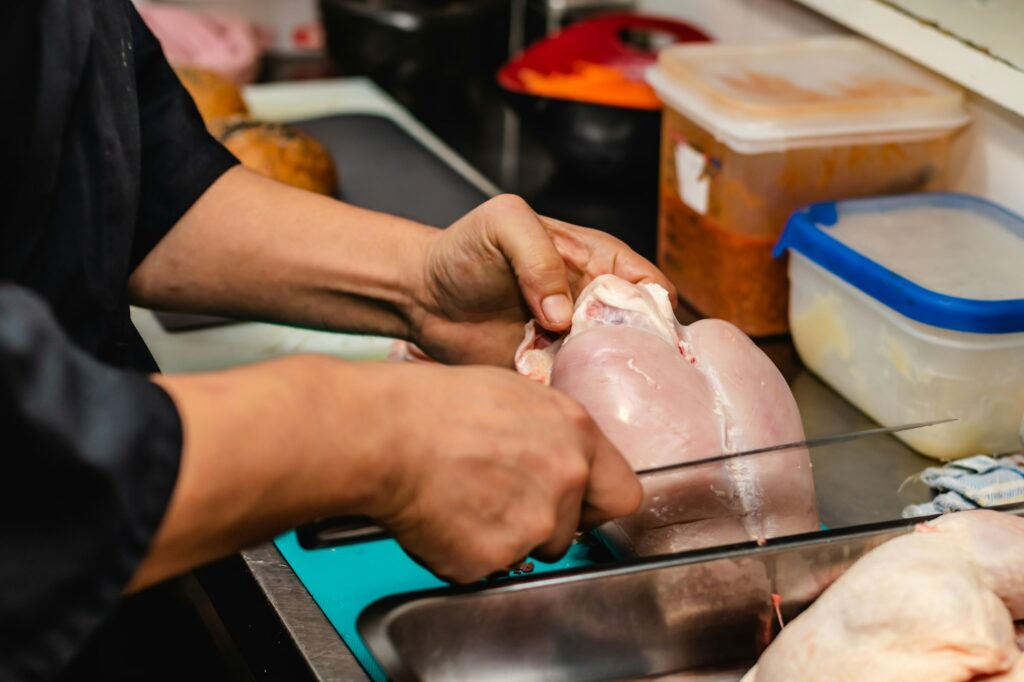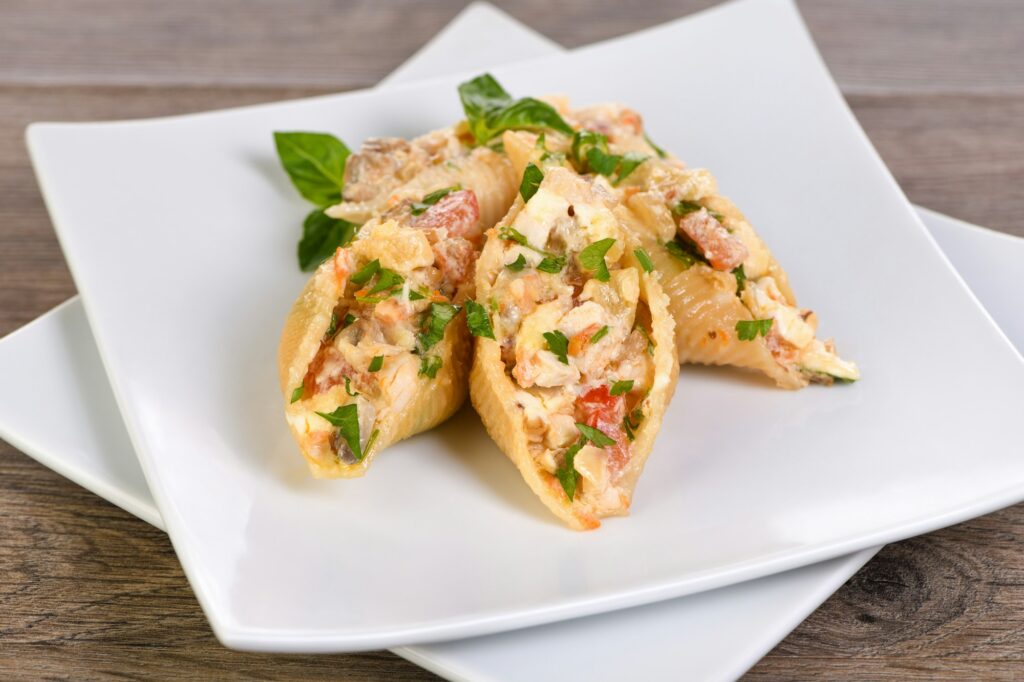In the culinary world, the debate surrounding chicken tenderloins and the presence of tendons within them often stirs confusion among both seasoned chefs and home cooks alike. This piece of meat, prized for its tenderness and flavor, comes with a small, yet significant consideration – the tendon. Understanding the anatomy of chicken is not just about enhancing one’s cooking skills; it’s about making informed decisions that affect the texture, taste, and overall enjoyment of your meals. Removing chicken tenderloin tendon is one of those decisions!
The chicken tenderloin, nestled beneath the breast, is a cut known for its ease of cooking and versatility. However, the tendon that attaches it to the chicken’s breastbone can be a source of contention. Should it stay, or should it go? This question not only touches on the preparation of the tenderloin itself but also delves into broader culinary practices and preferences.
In this article, we aim to unravel the mystery surrounding the chicken tenderloin tendon, offering insights into its role, whether it should be removed, and the impact this decision has on your cooking. From the anatomical specifics of the tenderloin to practical tips for tendon removal and cooking techniques, we’ll cover everything you need to know to master the art of preparing chicken tenderloins. Join us as we explore the nuances of these popular chicken cuts, enhancing your culinary repertoire and ensuring that your chicken dishes are nothing short of perfection.
Understanding Chicken Tenderloin
The chicken tenderloin holds a special place in the hierarchy of chicken cuts. Often overshadowed by the more prominent breast, the tenderloin is a gem waiting to be discovered by those who seek to elevate their culinary creations.
- Definition of Chicken Tenderloins: The chicken tenderloin is a small, slender muscle located underneath the larger breast muscle. It’s known for its tenderness and quick cooking time, making it a favorite among those who value both convenience and quality in their poultry dishes.
- Anatomical Location and Characteristics: Situated directly under the breast, the tenderloin is easily distinguishable by its size and shape. Unlike the breast, it contains a noticeable tendon, which plays a crucial role in the muscle’s function and movement.
When discussing chicken anatomy and chicken cuts, it’s essential to recognize the tenderloin’s unique position. Its definition as a distinct cut underscores its culinary value, offering a combination of tenderness and flavor that is unmatched by other parts of the chicken.
Understanding the tenderloin’s anatomy is the first step in appreciating its potential in a wide array of dishes. Whether you’re grilling, baking, or sautéing, the tenderloin can adapt to various cooking methods, promising delicious results every time.
Removing Chicken Tenderloin Tendon: An Introduction
A common query that arises when preparing chicken tenderloins is related to the tendon that runs through it. This tendon, while small, can significantly impact the texture and overall culinary experience of the tenderloin.
- What is the tendon found in chicken tenderloins? The tendon in question is a tough, fibrous band that attaches the tenderloin to the chicken’s breastbone. Its primary role is to support the chicken’s movement, which explains its resilient nature.
- Role and texture of the tendon: In culinary terms, the tendon’s texture can be somewhat off-putting. It does not break down easily during cooking, leading to a chewy or tough experience if not removed or properly treated.
The chicken tendon plays a crucial role in the anatomy of the bird but poses a challenge in cooking. Its texture contrasts sharply with the tenderloin’s soft meat, often leading to a decision point for cooks: to remove or not to remove.
Understanding the nature of the tendon and its impact on the tenderloin’s texture is essential for anyone looking to perfect their chicken dishes. The next section will delve into the considerations surrounding the removal of this tendon, providing insights into how it can affect your cooking outcomes.
Removing Chicken Tenderloin Tendon: To Remove or Not to Remove
The decision to remove the tendon from chicken tenderloins is one that varies among cooks, influenced by personal preferences, cooking methods, and desired outcomes.
-
Reasons for removing the tendon:
- Cooking evenly: Without the tendon, tenderloins can cook more uniformly, ensuring that every bite is perfectly tender.
- Texture preferences: For many, the ideal texture of chicken tenderloins is completely tender and free from any chewy parts, which can only be achieved by removing the tendon.
-
Arguments against removing the tendon:
- Nutritional value: While not significant, the tendon does contribute to the overall nutritional profile of the chicken, offering additional protein.
- Cooking techniques that mitigate texture issues: Certain cooking methods, such as slow cooking or marinating, can soften the tendon, making it less noticeable in the final dish.
The debate over whether to remove the tendon touches on various aspects of cooking techniques, nutritional value, and culinary preferences. Each cook must weigh these factors based on their specific goals and tastes.
Deciding whether to remove the tendon from chicken tenderloins is a nuanced choice that can affect the dish’s success. As we explore further, we’ll provide practical advice on how to remove the tendon for those who prefer their tenderloins without it.
The Art of Removing the Chicken Tenderloin Tendon
For those who prefer their chicken tenderloins without the tendon, removing it is a straightforward process that requires minimal tools and technique. Here’s a step-by-step guide to ensure a smooth removal:
- Prepare Your Workspace: Clean your cutting board and have a sharp knife or a pair of kitchen shears ready. Good lighting and a clean workspace will make the process easier and safer.
- Locate the Tendon: Feel for the tough, fibrous strand running along the tenderloin. It’s usually visible and can be felt as a firmer line within the meat.
- Use Paper Towels for Grip: Tendons can be slippery. Using a paper towel to hold the tendon can provide a better grip, making it easier to pull and remove.
- Method 1 – Knife Technique: Make a small incision at one end of the tendon. Then, while holding the tendon with a paper towel, use the knife to gently scrape the meat away from the tendon. This method is precise and allows for the complete removal of the tendon with minimal meat loss.
- Method 2 – Fork and Paper Towel: Another popular method involves using a fork. Place the fork over the tendon near its attachment point, then use a paper towel to grip the tendon and slide it off the fork, effectively pulling it out of the tenderloin.
- Clean Up: After removing the tendon, inspect the tenderloin for any remaining pieces and trim as necessary. Your tenderloins are now ready for cooking.
This section incorporates kitchen tools, preparation techniques, and cooking prep to guide readers through the tendon removal process, enhancing their culinary skills and ensuring the best possible outcome for their dishes.
Removing the tendon from chicken tenderloins can significantly improve the texture of the cooked meat, making it a worthwhile step for those seeking the perfect tenderloin experience.
Cooking with Chicken Tenderloins
With or without the tendon, chicken tenderloins offer a versatile base for a multitude of recipes. Here are some best practices for cooking tenderloins to perfection, along with recipe ideas to inspire your next meal:
- Marinating: Tenderloins absorb flavors well. A simple marinade can elevate your dish, infusing the tenderloins with depth and complexity.
- Quick Cooking Methods: Due to their size, tenderloins cook quickly. Grilling, pan-frying, or broiling over high heat for a short period can yield juicy, flavorful results.
- Avoid Overcooking: Overcooked tenderloins can become dry. Keep an eye on the cooking time and use a meat thermometer to ensure they reach the safe but moist internal temperature of 165°F (74°C).
Recipe Ideas:
- Grilled Lemon-Herb Chicken Tenderloins: Marinate tenderloins in lemon juice, olive oil, and your choice of herbs before grilling to perfection.
- Crispy Breaded Chicken Tenderloins: Coat tenderloins in seasoned breadcrumbs and bake or fry for a crispy exterior and tender interior.
- Stir-Fried Chicken Tenderloins: Quick and easy, stir-fry tenderloins with vegetables and a savory sauce for a healthy weeknight meal.
This section integrates chicken recipes, cooking best practices, and culinary versatility, offering readers practical advice and creative ideas for making the most of chicken tenderloins in their cooking endeavors.
Chicken tenderloins, whether prepared with or without the tendon, are a fantastic ingredient that can adapt to a wide range of flavors and cooking styles, making them a staple in any cook’s repertoire.
Nutritional Considerations
When it comes to incorporating chicken tenderloins into your diet, understanding their nutritional profile is key. Whether you choose to remove the tendon or not, tenderloins offer a wealth of health benefits that can fit into a balanced diet.
- Protein Content: Chicken tenderloins are an excellent source of high-quality protein, essential for muscle growth and repair. This makes them a favorite among athletes and those looking to maintain or increase muscle mass.
- Low Fat: Compared to other cuts of chicken, tenderloins are relatively low in fat, making them a lean choice for those monitoring their fat intake.
- Vitamins and Minerals: Rich in B vitamins, particularly niacin and B6, chicken tenderloins support energy metabolism and cardiovascular health. They also provide essential minerals like phosphorus and selenium.
The decision to remove the tendon does not significantly alter the nutritional value of the tenderloins. However, the method of preparation and cooking can impact their healthfulness. Grilling or baking tenderloins, for example, preserves their nutritional integrity better than frying.
Incorporating chicken tenderloins into your diet offers a versatile and nutritious option for meals that support a healthy lifestyle. By choosing cooking methods that align with your nutritional goals, you can enjoy the benefits of this lean protein source.
FAQs About Removing Chicken Tenderloin Tendon
Q: Should chicken tenderloins always be tenderized?
A: While chicken tenderloins are naturally tender due to their location on the chicken, tenderizing can further soften the meat, especially if you plan to marinate them. Tenderizing increases the surface area, allowing marinades to penetrate more deeply and evenly. However, it’s essential to be gentle to avoid breaking down the meat too much, which can affect its texture when cooked.
Q: How do you ensure chicken tenderloins remain juicy and tender during cooking?
A: The key to juicy and tender chicken tenderloins lies in not overcooking them. Use a meat thermometer to ensure they reach the safe internal temperature of 165°F (74°C) without exceeding it. Marinating tenderloins can also help retain moisture, as can cooking methods that lock in juices, such as searing on high heat quickly or using a wet cooking method like poaching.
Q: Is it necessary to remove the white membrane from chicken tenderloins?
A: The white membrane, or silverskin, on chicken tenderloins can be tough and chewy. It affects the overall texture of your dish. While not strictly necessary to remove for all cooking methods, doing so can improve the eating experience. It is especially applicable in recipes where tenderness is desired. Gently sliding a knife under the membrane and pulling it away from the meat is an effective way to remove it.
Q: What are some quick and healthy ways to prepare chicken tenderloins?
A: Chicken tenderloins are ideal for quick and healthy meals due to their lean nature and fast cooking time. Some healthy preparation methods include:
- Grilling with a light brushing of olive oil and your favorite herbs for a smoky flavor.
- Baking in the oven with a coating of breadcrumbs and spices for a crispy yet lean option.
- Stir-frying with a variety of vegetables and a light sauce for a balanced and nutritious meal.
- Poaching in broth or water infused with herbs and spices, then shredding for salads or wraps.
Conclusion
Understanding the nuances of chicken tenderloins and the tendon that accompanies them is crucial. Whether you choose to remove the tendon or cook the tenderloins as they are, this versatile cut offers endless possibilities for healthy and flavorful dishes.
By exploring the anatomy, nutritional value, and best cooking practices for chicken tenderloins, we’ve delved into the heart of what makes these cuts a staple in kitchens worldwide. Armed with this knowledge, you’re now equipped to make informed decisions in your cooking, ensuring that every meal is not only a delight to the palate but also a nourishing choice for your body.
Remember, the art of cooking is as much about understanding your ingredients as it is about technique. Chicken tenderloins, with or without the tendon, provide a canvas for culinary creativity and healthful eating.



